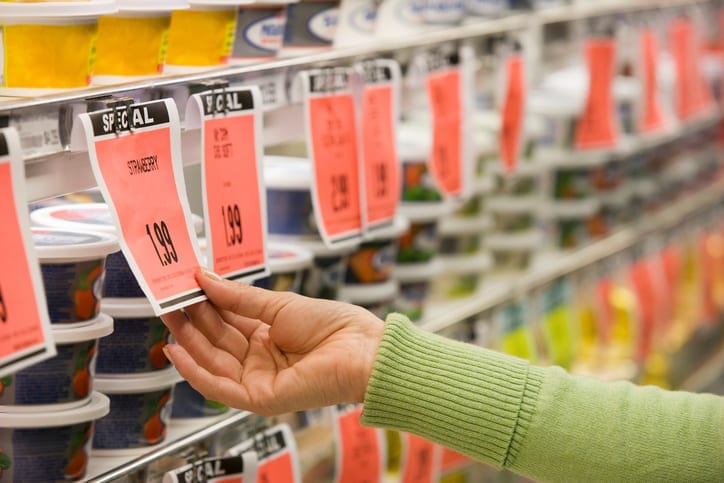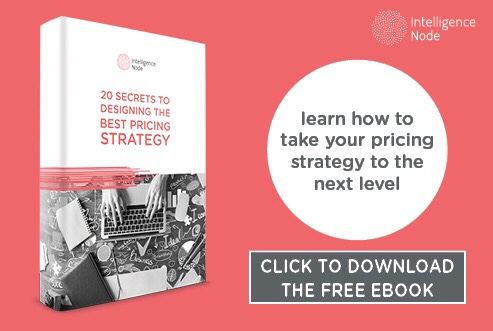Amongst the most daunting tasks required to survive the retail market is the know-how involved in setting good, competitive, attractive prices. Without a smart strategy, retailers often find themselves in two broad categories of bad pricing- low, cheap, attractive prices that grab attention but sacrifice a good margin; or high, pricey, lux pricing with a healthy profit margin but extravagant in the eyes of the consumer.
It’s an easy battle to lose- where watching the wins and failures of competitors is half the game- and even one poorly strategized decision can lead to immediate consequences. There is not one tried and tested pricing formula that works for all retailers in the business. Each business is unique and calls for a strategy or a combination of strategies that best suit its offerings and considers factors like competition, perceived value, demand, etc. while establishing profitable price points.
Although a singular, basic pricing formula once sufficed in generating the necessary profits, today, with huge chain stores, digital channels, discounts, marketing tactics, and even special edition seasonal product lines, retail is much more strategic, and a bare minimum pricing strategy is not enough to keep a business competitive. In a market ruled by smart, strategic, and quick moving business titans, what are the top pricing strategies retailers can use to keep up with the competition?
1. Dynamic Pricing
Dynamic pricing is a pricing strategy where retailers set flexible prices for their products based on market dynamics. With comparative shoppers on the rise and a sea of information at their fingertips, retail today demands prices that are competitive and that take into account factors like demand, competitor prices, stock movements, etc. In this pricing strategy, retailers can leverage data-driven insights from smart price intelligence solutions to optimize their prices in real-time and take advantage of market movements. With the surge in eCommerce and the ability of retail giants like Amazon to change prices within minutes using retail analytics, this pricing strategy is gaining momentum and leveling the playing field for other retail players in the eCommerce space.
2. Manufacturer Suggested Retail Price
As the name suggests, this is the price that manufacturers suggest to retailers. This is typically done to standardize the prices of their products across multiple retailers and selling channels.
A number of factors can influence the decision making process in this case – the bargaining power of the manufacturer, exclusivity of the product, etc. However, as a rule of thumb, the more conventional or mainstream the product is, the more it can be expected that the prices will be standardized.
One major advantage of setting retail prices this way is that it eliminates the need to analyse consumer data and competitor behavior while pricing your products, but a major disadvantage is that the control over the product is lost and with it any advantage over your competitors, as the product is sold at a pre-set price.
3. Keystone Pricing
Keystone pricing is the most common way to price products in retail. To determine the price, the retailer must simply double the wholesale price they paid. Keystone pricing isn’t always right for businesses and there can be instances when the price is too high or too low.
Keystone pricing is hard to master when your products are easily available everywhere. However, if your inventory turnover is slow, you have substantial handling and shipping costs, and you have products that are exclusive in some sense, then keystone pricing is a reliable strategy – it’s effective and ensures ample profits.
4. Multiple Pricing
The product bundling pricing strategy or multiple price method is another means of setting retail prices and is most commonly seen in the grocery sector, and sometimes in the apparel sector. In this case, the retailer sells more than one product at one single price.
For example: a shirt and a tie sold as a bundle make more profit than selling the products individually.
5. Discount Pricing
Sales, rebates, and discounts are the loudest, and most popular pricing strategies used to catch the consumer’s eye. There are many advantages to using discounts and similar methods while setting retail prices for your store – the most obvious one is attracting traffic to your store or selling off your inventory.
It is one of the best tried and tested ways to attract price-sensitive consumers to your store and offload your unsold inventory. However, it is important to be conscious of how often you choose to indulge in discounting as it quickly gives off the impression of being a bargain retailer which can malign your reputation in the retail space. Moreover, this type of pricing is not sustainable for longer durations and can eat into your margins.
6. Loss-Leading Pricing
The method of setting loss-leading retail pricing works as follows – a retailer allures customers to an outlet to buy a product that they want for a lower price and benefit from the additional purchases that the customer makes.
Such a pricing strategy works only when customers come to the store and choose to buy additional products. However, much like with discounting, the reputation of the brand is at stake with constant usage of loss-leading pricing, and consumers quickly grow to expect low, bargain prices from the outlet, and see the regular prices as premium.
7. Below And Above Competition Pricing
Below competition pricing of products in retail is pricing consciously below the competitive price in order to attract customers. Above competition is when pricing products above the price of competitors- and presenting it as more luxurious and exclusive.
While below competition pricing can work brilliantly if suppliers are open to negotiation and provide a lower per unit cost, it can also deal a blow to profitability if it is not possible to cut costs, given the decreased profit margin.
Above competition, on the other hand, works best with quality branding and communication- when customers believe that your product is better and are ready to pay more. Researchers at Vanderbilt University found that customers were willing to pay increased prices for the same product (Budweiser beer) when it was sold from different places. This implies that the environment surrounding a product on sale can make a significant difference in what customers are willing to pay for it. Therefore, you can raise your prices by simply changing the context in which the products are sold. Perception has a profound effect on influencing the evaluation of prices as part of a product’s value, all based on the context in which your customers view it.
Pricing products in retail involves making use of one or more of these strategies- the choice is made based on the product, brand, availability in the market, target consumers, competitor behavior, and many other contributing factors- but it is not possible to simply choose one strategy and stagnate; pricing must evolve as consumer behaviour evolves and changes over time, and must constantly grow and change to keep up with the variety of factors that may influence its performance in the market.




